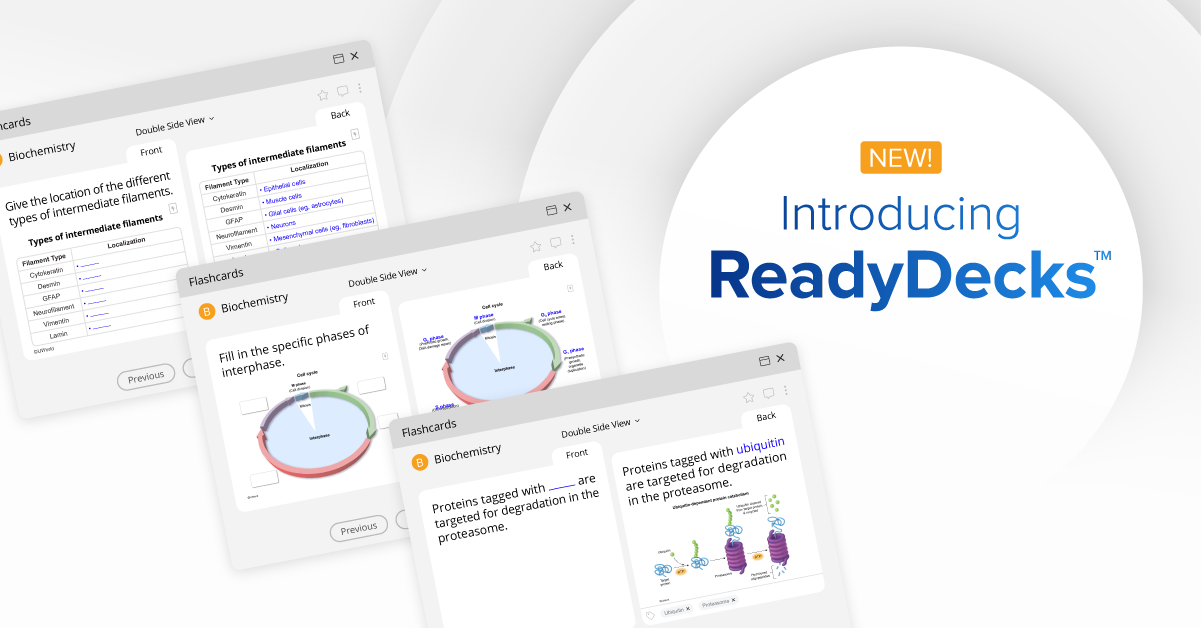By Michelle Chapman
Clinical Rotations: A New Learning Environment
Starting clinical rotations as a third-year medical student has been both exciting and nerve-wracking for me. I finally get to leave the classroom, work with patients every day, and feel like a member of the healthcare team. But I also have to adapt to learning in a fast-paced work environment—and that absolutely terrified me at first.
Before M3, I had just spent the last 18 years of my life learning in a classroom, taking notes as a teacher stood in front of me and told me exactly what I needed to know. Now I would be in the hospital, where my teachers (ie, my attending and supervising residents) would be occupied most of the day performing patient care. That meant I would need to self-direct most of my learning.
How could I make sure I learned what I needed in order to take care of my patients, especially when I couldn’t predict the type of patients I would see on a given day? How could I ensure that I had prepared adequately for the shelf exam, whose breadth would cover more than I would ever see throughout any given rotation? And how could I do it all while spending long days in the busy hospital environment?
How UWorld Prepared Me for Patient Care and Shelf Exams
UWorld had served me well during my studies for Step 1, and it came highly recommended by the M4 students for Shelf studying, so I decided to give it a shot. My first rotation was Internal Medicine (IM), one of the most important clerkships and certainly the broadest in scope and amount of information.
During my IM rotation, I studied with nothing but UWorld. In the Shelf Review section of the Step 2 CK QBank, I divided the number of questions in the IM section by the number of days in the rotation. That translated to about 20 questions per day to finish the QBank a few days ahead of the Shelf exam. Whenever I had a spare moment—on my commute, during lunch, in the afternoons while waiting for lab results or imaging—I worked on my questions using the UWorld phone app.
The interface was both straightforward to use and intuitive, especially since I had previously used the UWorld Step 1 QBank. I typically did my question blocks in untimed mode because I liked being unrushed while reasoning through the clinical vignette and answer choices. I also used tutor mode because I wanted to read the explanation right after doing a question.
There was no syllabus for what was tested on the Shelf exam, so I put all my trust in the QBank to cover the topics I needed to know the most. Fortunately, I found that the QBank was more than adequate. In fact, the UWorld QBank covered most topics multiple times and in multiple ways, so I really learned how to tackle a subject from all angles. In addition, the questions and explanations were written in such a way that they not only taught me the key points but allowed me to practice clinical reasoning. After taking my first Shelf exam, I was pleasantly surprised by how critical that experience was in preparing me for the Shelf’s long and complicated clinical vignettes.
Another pleasant surprise was how often the questions exactly depicted a real-life case I was following. The explanations put each learning point in perspective with a big-picture mindset that translated remarkably well to my day-to-day clinical activities.
How I Used the “My Notebook” and Flashcards Features
As I squeezed questions into all my spare moments, I also tried to capitalize on UWorld’s “My Notebook” and Flashcards features. I found that “My Notebook” was perfect for jotting down things I would want to look back at quickly, for both patient care and Shelf studying. It was perfect for copying over illustrations, tables, and main points from the explanations. I sometimes added notes from other sources as well (eg, things I looked up while studying my patient’s problem list or preparing for patient presentations).
The Flashcards feature was perfect for those nuggets of information that I simply needed to memorize (eg, normal lab values, classic triads). Just like Anki, the UWorld interface allows me to create my own decks and review them with spaced repetition using the settings of my choice.
My Takeaway
I have now completed four of my six core rotations, and UWorld is still the only study tool I have used. I would highly recommend UWorld to any student starting their clinical rotations. Being an M3 student is scary, challenging, but so incredibly exciting. UWorld makes the job of studying easy, so you can spend less time worrying about how to study and more time learning, serving your patients, and, of course, saving a little free time for yourself each day! UWorld truly is the only study tool you need to ace your shelf exams.
To learn more about Shelf Review and the UWorld Step 2 CK QBank, click here.




